VIDEO: Taxpayer-Funded Lab Torments Imprisoned Monkeys, Drives Them Mad
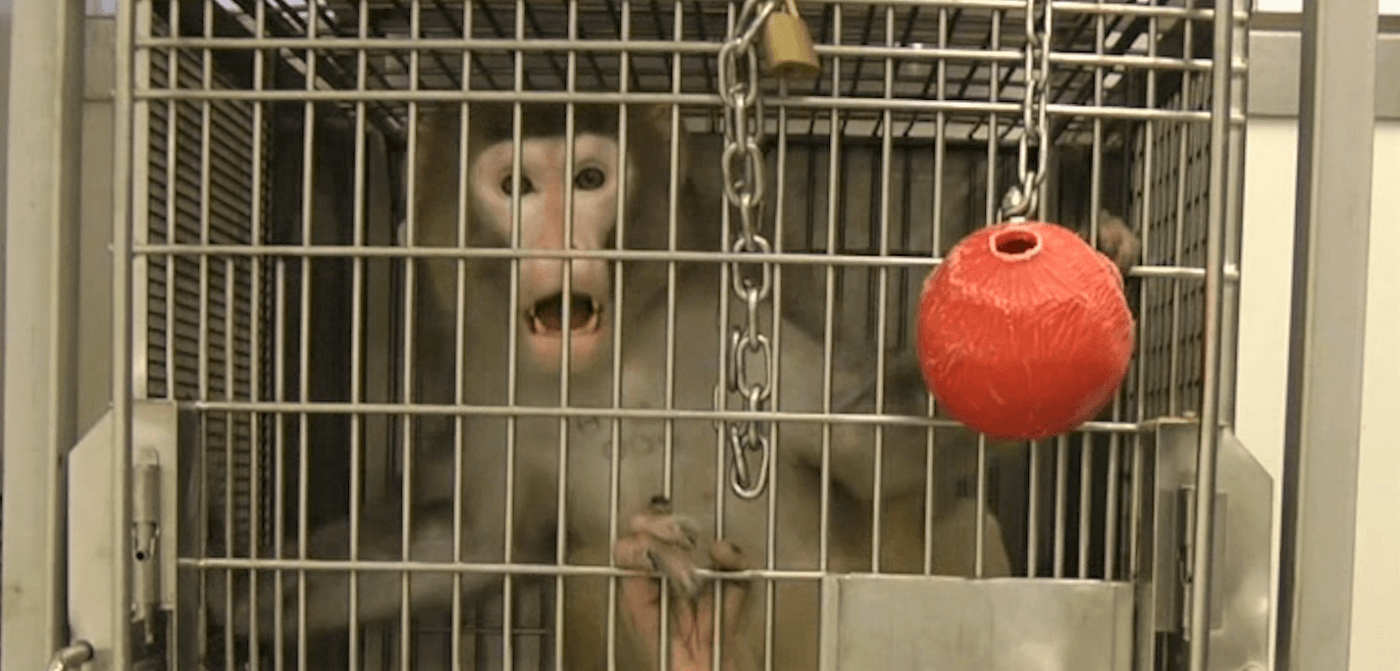
The University of Massachusetts–Amherst (UMass) tried to keep you from seeing this video. PETA sued, and we won. But before we even got the footage, the experimenter retired!
Now you can see what the school was trying to hide: Experimenters at four National Primate Research Centers—Oregon National Primate Research Center, Southwest National Primate Research Center, Washington National Primate Research Center, and the now-shuttered New England National Primate Research Center—were paid for two decades to study how being caged in laboratories affects monkeys. Our government dumped tens of millions of dollars into these atrocities—and has never even acted on what it learned.
Not one improvement has been ordered to help monkeys in laboratories since the 1985 amendments to the federal Animal Welfare Act—and those were the result of PETA video exposés of the torment that monkeys were enduring in hideous labs. In fact, Melinda Novak, the UMass experimenter who led the horrible study shown in the video footage we obtained, was a student of infamous monkey tormentor Harry Harlow. In a book chapter that she coauthored with him, she describes their development of a device termed “the terror trap,” which they used “to produce turmoil and terror” in monkeys. She goes on to describe putting infant monkeys in this device, causing them to scream and cry “until they became hoarse from the violence of their vocalization.”
This is what UMass and the other experimenters have shown again and again. Imprisonment in laboratories is so stressful that monkeys are driven mad, their immune systems are compromised, and data from any experiments done on them is virtually useless.
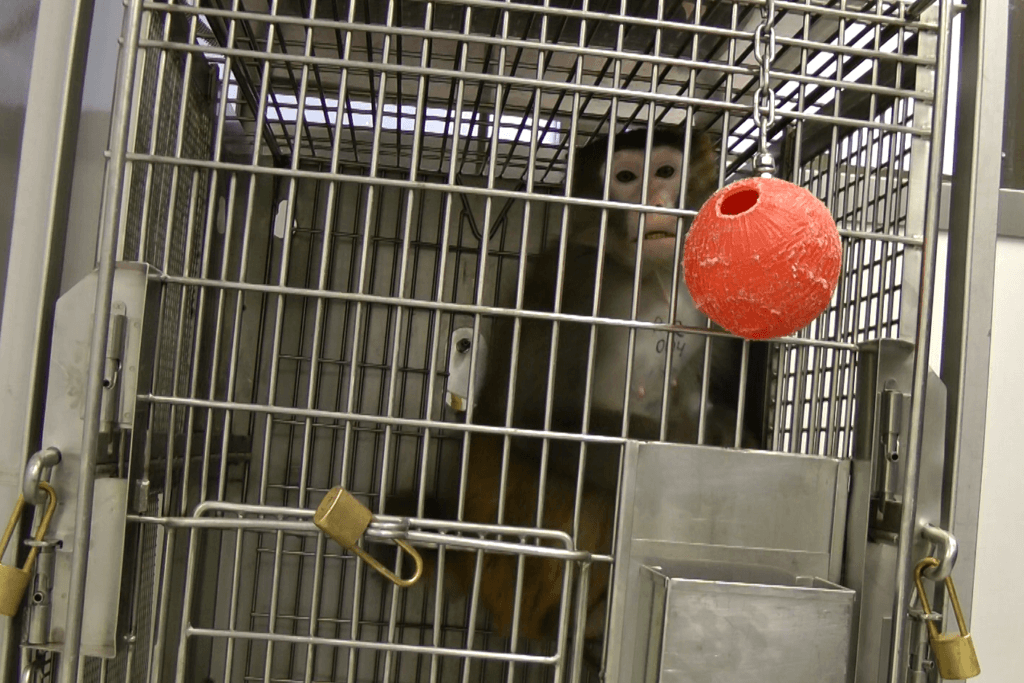
Stripped of everything that makes life worth living, gentle monkeys are not “housed” or even “caged” in laboratories so much as they are “stowed” like luggage or “stored” as if they were merely beakers or test tubes.
Solitary confinement is the bleakest and most inhumane of circumstances. The United Nations calls it a form of torture, on the same level as waterboarding.
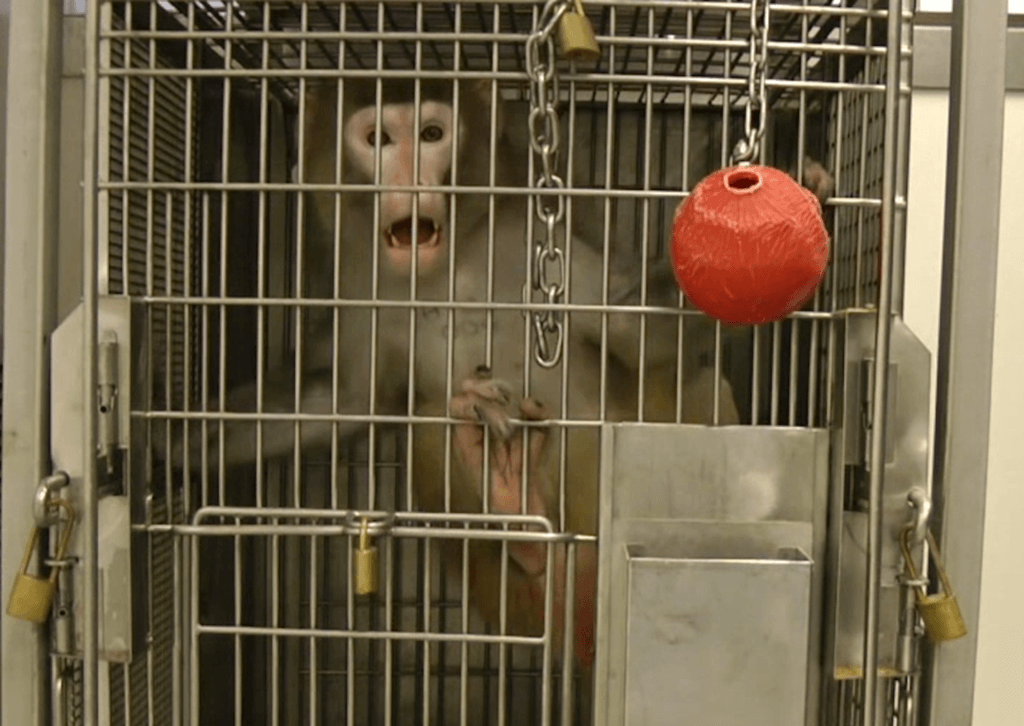
Kept in austere cages barely larger than themselves, sensitive and naturally social monkeys suffer from profound loneliness and psychosis. They pace, pull out their own hair, and bite themselves in desperate attempts to fill the utter impoverishment of their lives with any kind of stimulation.
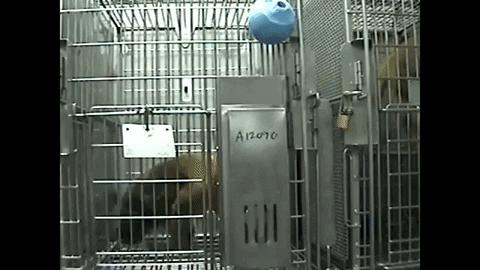
Science has known for 70 years that isolation creates psychosis.
Way back in 1951, McGill University used graduate students in an experiment to test the prolonged effects of solitary confinement using a simulated prison cell. The experiment was designed to last six weeks. It was canceled after just seven days, because students began hallucinating and suffered severe mental breakdowns.
Nonetheless, here we are, two decades into the 21st century, and monkeys in laboratories around the world are being kept inside barren cages and denied access to anything that might soothe their fraying nerves.
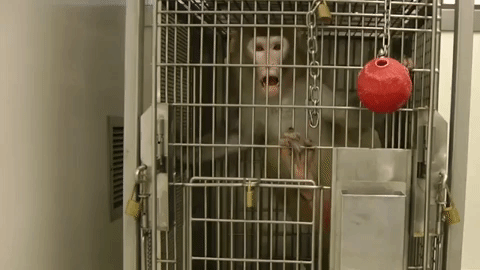
Mental breakdowns are inevitable.
The screams of other monkeys enduring experimentation ricochet off the cinderblock walls as unnaturally bright, fluorescent light beats down on their cramped cages. Monkeys exhibit stereotypic types of behavior, such as repetitive and purposeless movements like pacing, circling, swinging, and rocking to alleviate their mental anguish.
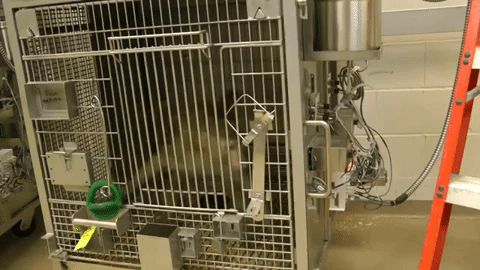
As their mental pain increases, monkeys will pull out their hair, engage in behavior such as the “eye poke,” in which they press on one corner of an eye with their thumb, or exhibit anxious behavior such as yawning or scratching.
Monkeys under the strain of confinement also will turn to aggressive types of behavior, such as assuming a threatening posture or vigorously shaking their cages.
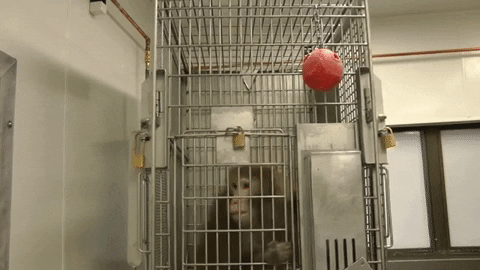
We have known for decades that monkeys need access to outdoor spaces and to far more enrichment than laboratories can possibly provide. However, the experimentation industry clearly doesn’t care.
There is no humane way to experiment on monkeys.
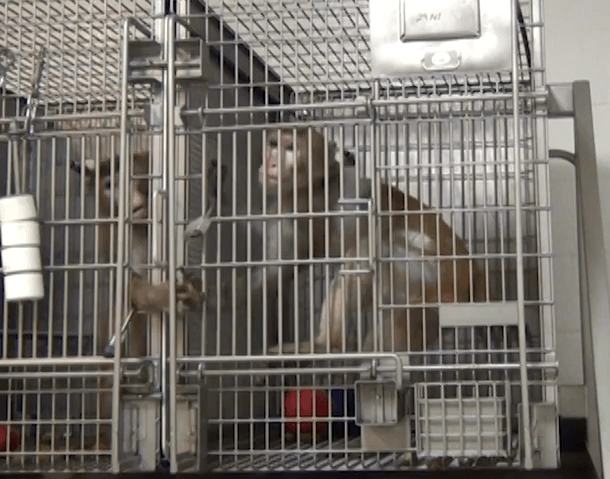
Take action below to end the government monkey fright experiments!
